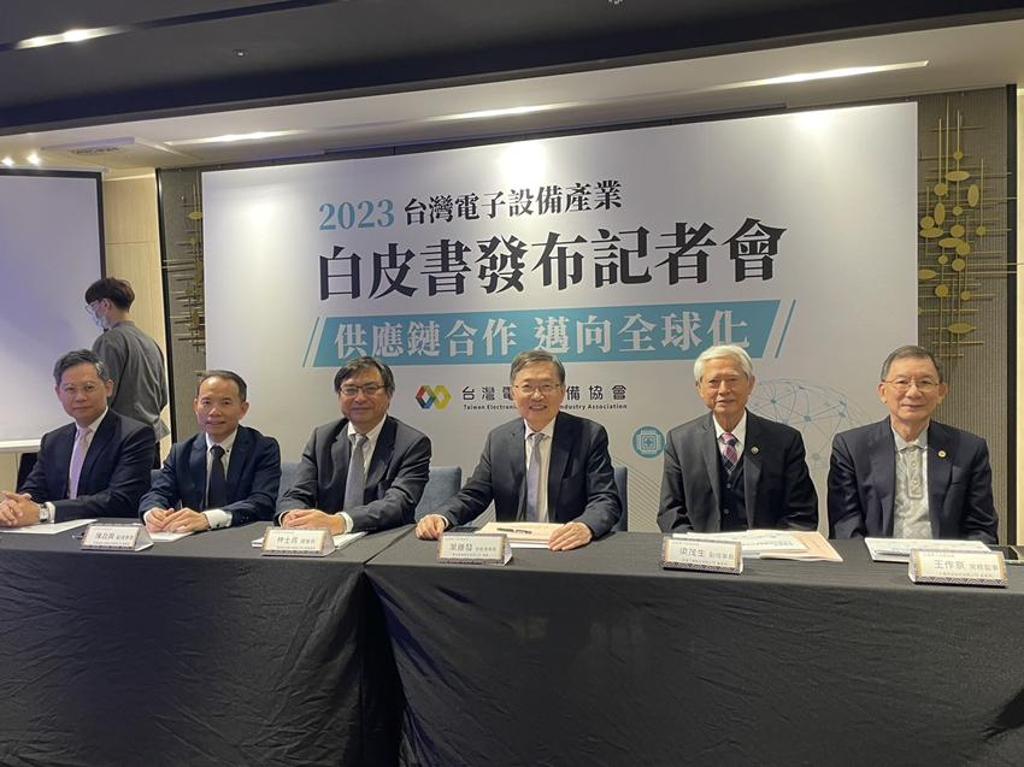
電子設備協會發表電子設備產業白皮書
The Taiwan Electronic Equipment Industry Association (TEEIA) released a white paper on the electronic equipment industry, calling on the government to have a clearer industrial policy on Taiwan's leading industries such as semiconductors, MicroLEDs, compound semiconductors, etc. Especially now that the semiconductor industry is already a rivalry between countries, the government should be more forward-looking in terms of taxes and policies to allow the industry to be rooted in Taiwan for the equipment, technology, and materials, and to enhance the value of the Taiwan electronic equipment industry.
In 2022, the value of Taiwan's electronic equipment industry exceeded NT$400 billion, including NT$142.4 billion for semiconductor equipment and NT$101.1 billion for display equipment. Under the guidance of government policies, the entire industry will strive to exceed the NT$1 trillion value of Taiwan's electronic equipment by 2030. The Chairman of Taiwan Electronic Equipment Industry Association, Sterling Lin, said that now is the best time for the development of Taiwan's electronic equipment. In the past, the panel, LED, and semiconductor industries lagged behind in terms of equipment technology and had a hard time keeping up. Now Taiwan's semiconductor back-end technology is leading the MicroLED and compound semiconductor industry, equipment manufactures are jointly cooperating, hoping to create more silicon shield.
Sheng-Fa Yeh, Honorary Chairman of the Board of Directors, said that while other countries are fully subsidizing the industry, the Taiwan government should speed up the revision of the law, and the Industry and Innovation Act, the investment credit and the R&D credit should keep pace with the times.
(A few days ago, Korea proposed a 30% credit for research and development, investment credit of up to 35%, on the contrary, Taiwan is only 10 to 15%)
Mr. Lin frankly, equipment manufacturers are troubled by the clients' willingness to assist in the development of new equipment need to be certified. Unless the R&D director and general manager are willing to support, otherwise the general engineers are not willing to take the risk of using domestic equipment, which requires the government to encourage buyers to be willing to cooperate with equipment manufacturers to increase the domestication of equipment.
In addition, in the midst of a trade war, various industries are moving overseas to set up factories. In the process of supply chain transfer, they have to face various challenges such as language, law, culture, etc. It is very difficult for a single enterprise to fight alone. If a industry leader can take the lead and link up related companies in the supply chain, and take the concept of a "industrial park", or if the government can lead the investment and negotiate with the local government to obtain better conditions in terms of obtaining land for industrial use, and in terms of utilities and infrastructure, it is possible for the government to take the lead in the investment and negotiate with the local government.
